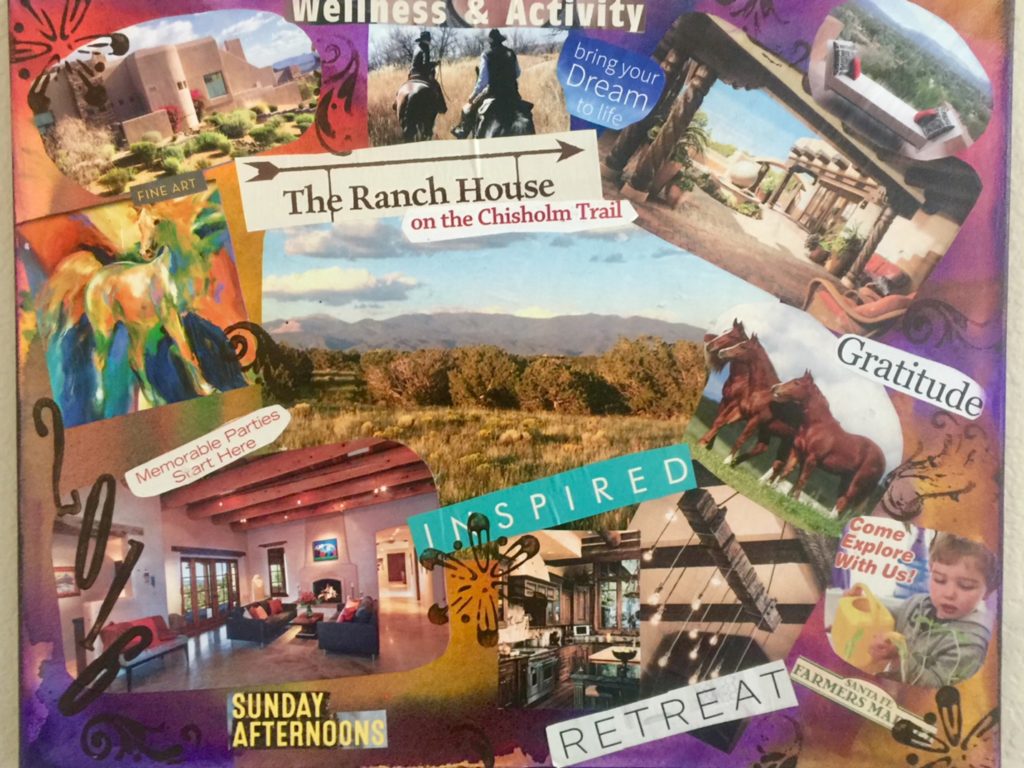Goals, combined with visualization, are the keys to successfully making your vision a reality.
If you missed the past two blog posts of this series, please read PART 1 here and PART 2 here.
I know, several of you are protesting and are already thinking about skipping this part of the process.
I urge you to stay with me.
THIS IS AN IMPORTANT PART OF ACTUALIZING YOUR DREAMS AND INTENTIONS.
Without goals, you may as well be throwing darts in the dark.
A lot of people don’t set goals because they’re afraid of feeling failure if they don’t achieve them.
My coach tells me to celebrate my “failures” because they mean I took action. Any action is better than non-action, and “failed attempts” teach us invaluable lessons.
HOW CAN YOU ACHIEVE YOUR DREAMS WITHOUT TAKING ACTION?
Goals help you align what’s important to you with where you focus your time, energy, and attention.
By taking focused action, you move in the direction of your vision.

So let’s do this!
STEP 1:
Take our your sheet of paper where you wrote down what you want to create for yourself in 2018, in each category of your life:
Personal/Emotional Growth
Family/Relationships
Spiritual
Career
Financial
Health & Wellness
Home/Physical Environment
Look over each category and determine what are your most important goals. Place some type of notation next to them.
I recommend that you set no more than four important goals for the year; one for each quarter. If one of your goals is a BIG goal that requires a year or more to achieve, you need to break it down into smaller, bite-sized goals.
The maximum time frame for each of your goals should be 90 days.

One of my BIG goals is to complete construction on our ranch in Santa Fe and to move there with our horses. That isn’t a goal that I can achieve in a 90 day timeframe. So I broke that down into smaller, 90 day goals.
My husband and I put our dream ranch in Santa Fe on our 2016 vision board and it’s still in the “creative process”.

We purchased the land in 2015, but didn’t start construction on our home until November of this year. We set and achieved a lot smaller goals to get us to the construction phase of our BIG goal. Before we can move our horses onto our property we need to install fencing and a loafing shed.
Most likely it will be 2019 before that’s done, so we need to keep making smaller, 90-day goals until we achieve our BIG goal.
Some of the intentions you wrote down may be to-do list or action items for a larger goal. I suggest you put a notation such as “TD” next to those things.
Other things, like exercise, eating clean, and meditating may be ongoing maintenance goals. For ongoing goals, I schedule time, or blocks of time, in my calendar to do them.
STEP 2:
Once you’ve identified your three or four goals for 2018, you’re going to create a SMART Plan goal for each one.
I believe that most people who work in the corporate world are familiar with SMART Plan goals. SMART is an acronym for:
Specific:
Make your goal specific. To get in shape is not specific. What does getting in shape mean to you? Is it to lose 20 lbs, exercise 5 days a week, or drop down two dress sizes? Make your goal as specific as possible.
For the purposes of this example, let’s say your specific goal is to lose 20 pounds.

Measurable:
Your goal must be measurable. Think of the details, data, before & after, or how will you know when you’ve reached your goal.
SO, IN THE EXAMPLE OF LOSING 20 LBS, YOU NEED TO KNOW YOUR WEIGHT ON THE DAY YOU START WORKING ON YOUR GOAL.
Actions:
This is the part where you brainstorm. What is every action you can think of that you can take to reach your goal? List them.
FOR OUR EXAMPLE YOUR ACTIONS STEPS ARE:
Cut white foods out of your diet, such as sugar, flour, starch, bread, etc.
Commit to exercising five times/week. (You’ll do cardio three times/week for 30 minutes, and you’ll take a 60 minute yoga class two times/week.)
Eat only when you’re hungry.
Practice mindfulness when you eat; chewing slowly, and stopping when you’re sated.
Keep a food diary and write down everything you eat and drink.
Reasons:
Most examples I have seen of SMART Plans say the “R” stands for “Relevant” or “Realistic”.
In my EGCM® COACHING CERTIFICATION PROGRAM, I learned that the “R” stands for “Reasons” and this is the way I’m going to coach it to you.
TONY ROBBINS SAYS, “PEOPLE WILL DO MORE TO AVOID PAIN THAN THEY WILL TO FEEL PLEASURE.”
So, in our example of your goal to lose 20 lbs, let’s say you’re tempted to eat a piece of chocolate.

If you’re focused on the pleasure of eating the chocolate, you’ll eat the chocolate. But, if you’re focused on the pain you’ll feel if you don’t reach your goal, you probably won’t eat the chocolate.
I hope this explanation helps you understand why I’m going to coach the SMART plan model in this way.
So, under the “R”, write down the all the positive reasons to achieve your goal.
One may be that your your blood pressure and cholesterol levels will drop to healthy ranges, which would improve your overall health.
Write down as many positive reasons you can think of.
Next, think about what will happen if you don’t reach your goal. Some of them may be that you have to go on medications to lower your blood pressure and cholesterol.
What else?
Would you feel like a failure?
Would you have a hard time keeping up with your grandchildren?
Then, stretch it out for five years…
What would happen if you continued trending in that direction? How much more weight would you put on? What would the effects be on your liver function after taking medications over a long period of time.
YOU WILL BE MORE MOTIVATED BY THE PAIN, SO THINK IT THROUGH.
What pain will you feel if you don’t succeed in achieving your goal?
Timeline:
What is the timeline for achieving your goal?
IT SHOULD NEVER BE MORE THAN 90 DAYS. IF IT’S OVER 90 DAYS, YOU NEED TO BREAK THE GOAL DOWN INTO SMALLER GOALS.

After you’ve reached your goal, make sure you celebrate!
It’s important that you celebrate your accomplishments before moving on to the goal.
We’ve spent so much of our lives in “doing” and “achieving” modes.
One of the joys of midlife is slowing down to enjoy the journey.
One last thing, be sure to keep your goals in front of you and read them every day.
STUDIES SHOW THE MOST SUCCESSFUL PEOPLE READ THEIR GOALS EVERY DAY.
If you look at your goals every morning and put one action, or to-do item, on your calendar and do it…WOW!
YOU ARE GOING TO MAKE 2018 YOUR BEST YEAR!
Happy Holidays!
Sending you all my love,
P.S. If you have any questions or need clarification on any part of this process, please send me an email to lyn@blissfulheartcoaching.com.

